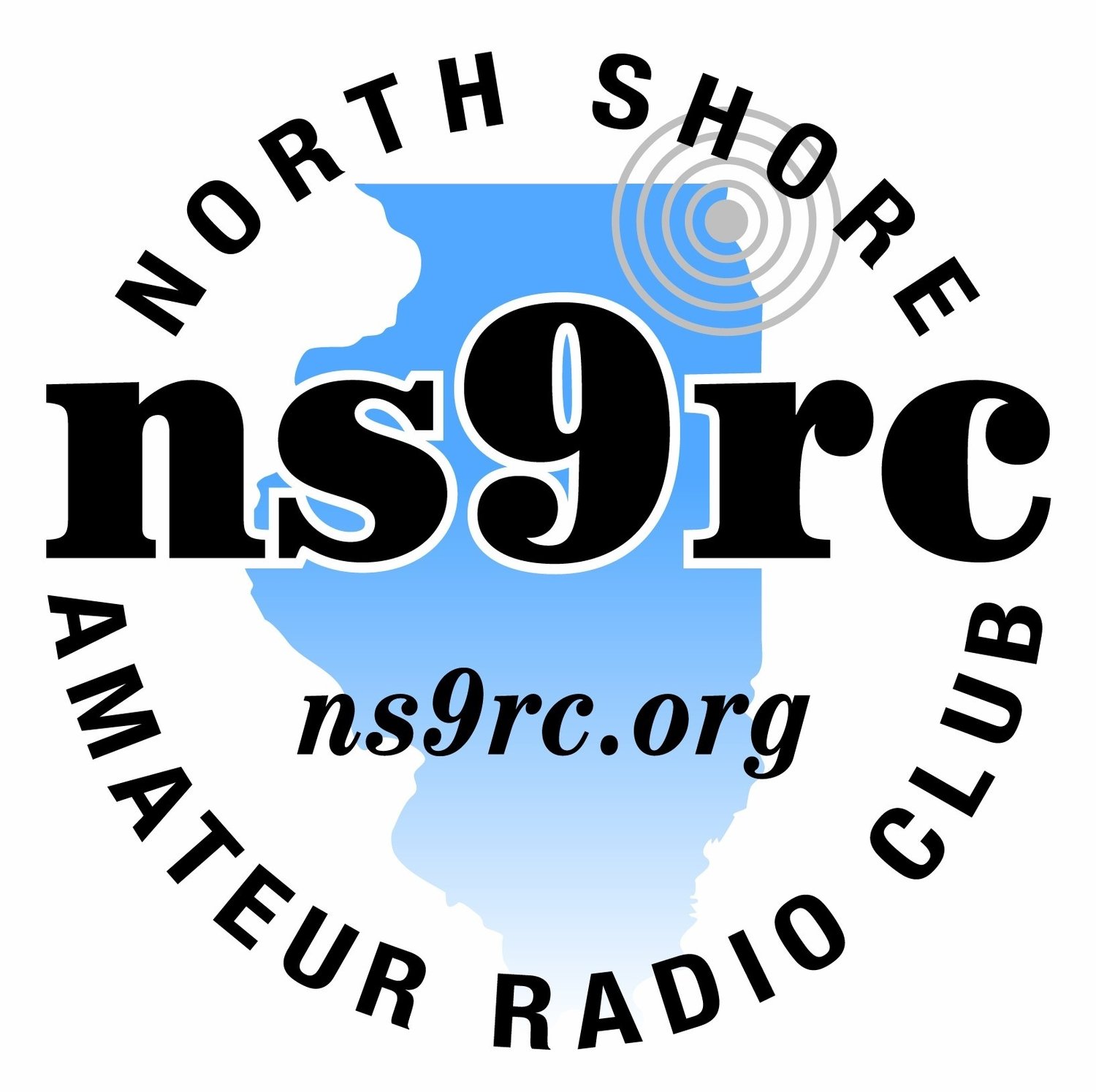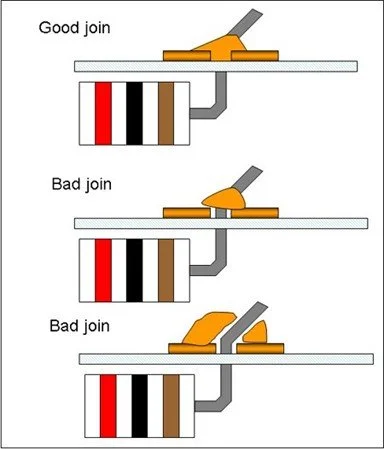Electronic Solder Technique
Introduction to Soldering
Soldering
Soldering is a process in which two or more metal items are joined together by melting and then flowing a filler metal into the joint—the filler metal having a relatively low melting point.
Soldering is used to form a permanent connection between electronic components.
The metal to be soldered is heated with a soldering iron and then solder is melted into the connection.
Only the solder melts, not the parts that are being soldered.
Solder is a metallic "glue" that holds the parts together and forms a connection that allows electrical current to flow.
Solder is a metallic "glue" that holds the parts together and forms a connection that allows electrical current to flow.
What is required for soldering electronic componenents?
A soldering iron. A soldering iron is used to heat the connections to be soldered. For electronic circuits, you should use a temperature controlled 40-to 70 watt (W) soldering iron. Higher wattage soldering irons are not necessarily hotter; they are just able to heat larger components. A 40-W soldering iron makes joints faster than a 25-W soldering iron does. See the NSRC website for recommended solder stations.
Rosin core solder. Solder has a lower melting point than the metals that are being connected do. The solder melts when it is heated by the soldering iron, but the metals being joined will not melt. The rosin core acts as a flux. It prevents oxidation of the metals that are being connected and enhances the ability of the solder to "wet" the surfaces that are being joined. Solder that is used to join copper pipes has an acid core, which is appropriate for pipes, but will corrode electronic connections. Use solder that has a rosin core. For most electronics work, a solder with a diameter of 0.75 millimeters (mm) to 1.0 mm is best. Thicker solder might make soldering small joints difficult and increases the chances of creating solder bridges between copper pads that are not meant to be connected. An alloy of 60/40 (60% tin, 40% lead) is used for most electronic work. Stay away from lead free solder as a beginner. It requires higher temperatures, and it is more difficult to work with.
Stand on which to hold the hot soldering iron. There are a variety of stands available. It is important to always keep the hot iron in its stand when not in use.
Sponge. The damp sponge is used to clean the tip of the iron. A better option is also a brass sponge which doesn’t require to be moistened.
Solder braid. It is used to remove solder. To use the braid, place it over the solder to be removed and heat it from above with the iron. The solder will flow into the braid. Solder braid is used to extract an electronic component that is soldered onto a board. It is also used to reduce the amount of solder on a connection.
Safety & Tips and Safety Precautions
Caution: A soldering iron can heat to around 400°C or more, which can burn you or start a fire, so use it carefully. Unplug the iron when it is not in use.
Were safety glasses.
Keep the power cord away from spots where it can be tripped over.
Always return the soldering iron to its stand when it is not in use.
Never put the soldering iron down on your work bench, even for a moment!
Work in a well-ventilated area.
The smoke that will form as you melt solder is mostly from the flux and can be quite irritating. Avoid breathing it by keeping your head to the side of, not above, your work.
Solder contains lead, which is a poisonous metal. Wash your hands after using solder.
Tips
Reliable operation of a circuit with soldered connections depends on good soldering practices. Here are some tips for successful soldering.
Plan before you start to solder. Identify all the parts that you will be using. It is helpful to attach each part to a piece of paper and write what it is and its value (for example, resistor #1: 100 ohms).
Some components, such as LED's, must be placed the correct way around in order to function.
The following is a suggested order for the installation of various components:
Integrated circuit (IC) holders (note the orientation). The IC will be added later.
Resistors
Capacitors, less than 1 micro farad
Large capacitors, 1 micro farad or greater, note the orientation.
Diodes, note the orientation.
LED's, note the orientation.
Transistors, note the orientation.
Solid wire connections between components on the board. Solid wire is fairly rigid, so it will stay in place once attached.
Stranded wire to parts that are connected by wire to the circuit. Stranded wire is more flexible than solid wire.
Integrated circuits.
Connect them the correct way around.
Some IC's are static sensitive.
Leave IC's in their antistatic packaging until you need them, then ground your hands by touching a metal water pipe or window frame before touching the IC's.
Carefully insert IC's in their holders. Make sure all the pins are lined up with the socket, then push down firmly with your thumb.
Preparing
Preparing the Soldering Iron: Tinning the Tip
Place the soldering iron in its stand and plug it in.
Wait for the soldering iron to heat up.
Moisten the sponge.
Wipe the tip of the iron on the damp sponge. This will clean the tip.
Melt a little solder on the tip of the iron. This is called tinning and it will help the heat flow from the iron's tip to the joint.
The solder should flow onto the tip, producing a bright shiny surface. If the solder will not flow onto the tip, clean it by wiping it on the wet sponge. When tinned, wipe excess solder off on the wet sponge.
You do not need to tin the tip before every joint, but you should re-tin it if it has gone dull when the soldering iron has not been used for a few minutes. Check the manufacturer's instructions related to tinning the tip. The tip of the soldering iron should be a shiny silver color. If it is black and pitted, replace it with a new one.
Soldering
Solder needs a clean surface on which to adhere.
Remove any oil, paint, wax, etc. with a solvent, steel wool, or fine sandpaper.
To solder, heat the connection with the tip of the soldering iron for a few seconds, then apply the solder.
Heat the connection, not the solder.
Hold the soldering iron like a pen, near the base of the handle.
Both parts that are being soldered have to be hot to form a good connection.
Keep the soldering tip on the connection as the solder is applied.
Solder will flow into and around well-heated connections.
Use just enough solder to form a strong connection.
Remove the tip from the connection as soon as the solder has flowed where you want it to be. Remove the solder first, then the iron.
Don't move the connection while the solder is cooling.
Don't overheat the connection, as this might damage the electrical component you are soldering.
Transistors and some other components can be damaged by heat when soldering. A crocodile clip can be used as a heat sink to protect these components.
Soldering a connection should take just a few seconds.
If it is taking longer, see the troubleshooting section below.
Inspect the joint closely. It should look shiny (note: lead-free solder may appear dull, this is OK).
If you are soldering a wire (called the lead) onto a PC board (on the track), it should have a volcano shape.
If the connection looks bad, reheat it and try again.
Wipe the tip of the iron on a damp sponge to clean it. The tip should now be shiny.
Unplug the soldering iron when it is not in use.
Troubleshooting
Common Problems and Troubleshooting
Solder will not flow. The parts to be joined may be dirty. Remove the solder and clean the parts.
The connection looks grainy or crystalline. Parts were moved before the solder was allowed to cool. Reheat to form a good joint. You may need a larger soldering iron to heat connections adequately.
The tip is oxidized. Soldering is much easier with a shiny, clean tip. Clean the tip with a damp synthetic sponge while the iron is hot. To avoid oxidizing the tip, do not leave the iron plugged in when not in use. Do not use the iron at a higher temperature than is necessary to melt solder. Clean the tip of the iron on a damp synthetic sponge as soon as it starts to change from a silver color.
There is too much or too little solder. Using too much solder can cause a solder bridge, which means that two adjacent joints are accidentally connected. Using too little solder might result in poor electrical continuity between the board and component. The connection should be smooth, shiny, and rigid.



